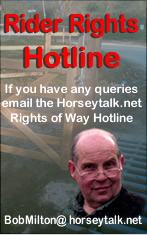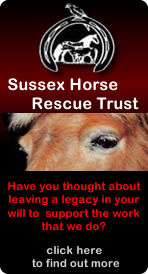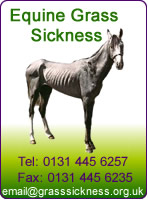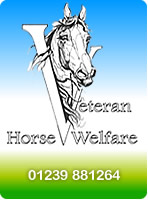
RIDER RIGHTS
Says Naomi Smith
 It is all too possible to round a corner on horseback
and come upon a group of cattle with no prior warning -this WILL result in
a horse being badly spooked at best, bolting at worst -it is only a matter of
time ........... read more
It is all too possible to round a corner on horseback
and come upon a group of cattle with no prior warning -this WILL result in
a horse being badly spooked at best, bolting at worst -it is only a matter of
time ........... read more
Equestrian access to the countryside
In many parts of the country interested people have little or no comprehension of the realities of equestrian access to the countryside.
Bob Milton discusses the implications for riders
 - The BHS must come forward with a strategy and policy to help local members claim both the highways they already ride but are not on the definitive map and statement and those that were historically highways and are illegally blocked or obstructed
- The BHS must come forward with a strategy and policy to help local members claim both the highways they already ride but are not on the definitive map and statement and those that were historically highways and are illegally blocked or obstructed
- The lack of a legally definitive highway map is a substantial obstacle to the public’s highway rights. This is reinforced by the variation within Highway Authorities of how they recorded “streets” which were “maintainable at public expense”. The practice of tippexing out existing public highways from the statutory document without legal process only adds to the furore surrounding the status of public highways.
- This disregard of the BHS is worrying in itself with respect to the way the BHS is viewed by Government. This situation does need to be urgently addressed if the BHS is to maintain any real credibility in the future.
- As always the BHS is fighting a rear guard action to over come years of obstruction and displacement caused by such things as self closing and inoperable gates ostensible for grazing and in the case of the latest round of Higher Level Stewardship agreements [ some 50 this year] for conservation extensive grazing
- After a strong initial report on the dangers of self closing gates a second round of the BHS gate trials have not been started yet NE which is partially funding the trials continues to sign stewardship agreements with local authority and other institutional land owners or their contractors which have at the centre of the agreement the enclosure and gating equestrian access.
Says Bob Milton
During the recent British Horse Society’s [BHS] access conference it became clear that there are areas in countryside access management where interested parties have little or no comprehension of the realities of equestrian access to the countryside.
It was heart warming to hear from Keith Hackett BHS access officer for Sefton/Knowsley of the positive approach to urban equestrian access being promulgated in Liverpool so enabling much needed equestrian access to be linked in and protected with other non motorised users in a spirit of equal rights for all. It is clear that partnership working is a strong force for enabling equestrian access to the countryside but it must not be at the expense of legal or lawful rights without any benefit in the changes.
The looming sword of Damocles that hangs over us in the 2026 cut off date for claiming historical rights is being further played out in the committee stage of the Deregulation Bill was strongly illustrated by Dr Phil Wadey former chairman of the BHS in his presentation. The BHS must come forward with a strategy and policy to help local members claim both the highways they already ride but are not on the definitive map and statement and those that were historically highways and are illegally blocked or obstructed. The priority should be those that are already on the Rights of Way Improvement Plan and those which act as links on the existing Rights of Way Network.
Perhaps the BHS should follow the Hampshire Access Forums lead and apply, either on its own or with the other main non motorised user groups, for a PATHH lottery grant.
The crux of the presentation from the local government rights of way representative [Will Steel of Balfour Beatty] was we can’t or won’t help so get on and do it yourself. That is despite the Highway Authority’s statutory duty to ‘protect and assert’.
This situation is made worse by the removal of the “on the balance of probabilities” test by the Deregulation Bill and the lack of clarity as to any savings for highways [ie non rights of way] on the ‘List of Streets’ not on the Definitive Map and Statement and the relevance of sealed or unsealed vehicular carriageways.
The lack of a legally definitive highway map is a substantial obstacle to the public’s highway rights. This is reinforced by the variation within Highway Authorities of how they recorded “streets” which were “maintainable at public expense”. The practice of tippexing out existing public highways from the statutory document without legal process only adds to the furore surrounding the status of public highways. The need for a legal and definitive highway map seems to be the only way forward if the cut off date is to have any consensus or support from users.
Wind farms are as always an issue for debate especially when it comes to equestrians. So it was with the presentation by Sarah Lee of renewables developer RWE Npower. One of the key points to come out of the presentation was the complete disregard that PINS Inspectors have for the BHS and what is perceived as its members blanket objection to every type of bladed electricity generating wind device.
This disregard of the BHS is worrying in itself with respect to the way the BHS is viewed by Government. The reason was given that there is no scientific evidence to back up the BHS guidance and advice. This situation does need to be urgently addressed if the BHS is to maintain any real credibility in the future.
The work done by RWE Npower in liaising with equestrians is not, it seems, repeated across all wind farm developers especially the big six. The BHS should put in place a programme of partnership working with all the developers so that local members and access officers can provide constructive input. This approach should also be rolled out to all major Government agencies and NGOs where equestrian access is under threat such as Network Rail, the Forestry Commission, MoD Defence Infrastructure. Regional differences in approach and even interdepartmental variations are substantial problems for members and is noticeable in Highway Authorities and the National Trust
The final presentation of the conference tied in with the wind farms presentation in respect of the interpretation by PINS inspectors of BHS guidance. The presentation by Helen Baczkowska who is the conservation officer for Norfolk Wildlife Trust and the Wildlife Trusts UK representative on the Defra / NE common land stakeholders’ consultative group was on common land. The Stakeholders’ Group is a talking shop for interested parties and a way of avoiding important issues such as the conflict between agricultural, conservation and recreation land management.
The presentation and other recent activities relating to common land especially lowland heaths epitomise the distain the Wildlife Trusts and Natural England have for existing public rights and equestrian access in particular. At no time during the presentation were equestrian access rights or how the WLTs deal with them referred to. As always the BHS is fighting a rear guard action to over come years of obstruction and displacement caused by such things as self closing and inoperable gates ostensible for grazing and in the case of the latest round of Higher Level Stewardship agreements [ some 50 this year] for conservation extensive grazing. There have been a proliferation of ‘no horses’ signs on equestrian commons across the country as there has been in the increase in the number of gates [both self closing and ordinary ones which are difficult to open] on rights of way where there is no grazing as well as accidents to and with horses caused by grazing animals on rights of way and equestrian access land
After a strong initial report on the dangers of self closing gates a second round of the BHS gate trials have not been started yet NE which is partially funding the trials continues to sign stewardship agreements with local authority and other institutional land owners or their contractors which have at the centre of the agreement the enclosure and gating equestrian access.
The driving force for common land fencing and gating is not in the most part the wish or need to exercise common rights but the unrestrained attempt of management – mostly wildlife trusts to avail themselves of stewardship monies. These are doled out by Natural England in a desperate attempt to meet targets [now called objectives].
The fact that stewardship cannot be legally paid for statutory duty seems to have been conveniently lost from NE’s own cross compliance guidance and its instructions to its own officers who sign the agreements. NE seeks to pass the buck onto the land owners who should sign various clauses but the agreements are designed and signed by NE officers; so who has the liability?
These facts are also conveniently forgotten or misinterpreted by PINS inspectors who are granting enclosure so that HLS can be claimed. This is despite there being no science to support the claims made by NE that extensive grazing will bring an SSSI into favourable condition. This therefore is an example of duplicity in the Inspectorate.
Perhaps the following quote from ‘Contested Common Land’ Rogers et al 2011 [ISBN 978-1-84971-094-7] should be sent to all parties involved especially where statutory duty is involved and where commons are held for other purposes such as recreation and military training.
“Measures under the EC Rural Development Policy are only available for applicants engaged in 'farming', and are therefore inapplicable if a common is not put to an agricultural use. The determining factor here is the economic use to which commoners put their rights, rather than the nature of the rights themselves - only common rights holders who are registered as farmers for the receipt of European Community subsidies can claim agri-environment payments under schemes such as ESA, ELS or HLS. It follows that agri-environment schemes such as HLS have no potential application for the management of 'recreational' commons or those whose primary feature is (paradoxically) their high nature value rather than their value as an agricultural resource." (Rodgers)
Common land in England and Wales covers over 330,000 ha [registered] of which 133,000 ha has lawful equestrian access. This figure could expand by over 75,000ha once the Commons Act 2006 re registration process is rolled out. It is a precious resource for all those interested in the open and unenclosed lands and any one user should not as presently the case be discriminated against or displaced.
Says Linda Wright
 We moved to a Shropshire location a year ago having surveyed the local OS
map and noted the significant number of bridleways around the property.
Sadly the map appears a total fiction. Scarce any of the bridleways are
usable ........... read more
We moved to a Shropshire location a year ago having surveyed the local OS
map and noted the significant number of bridleways around the property.
Sadly the map appears a total fiction. Scarce any of the bridleways are
usable ........... read more







